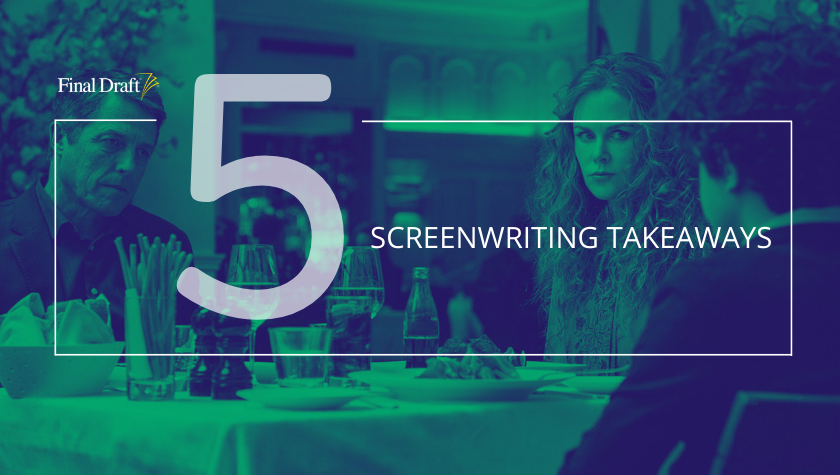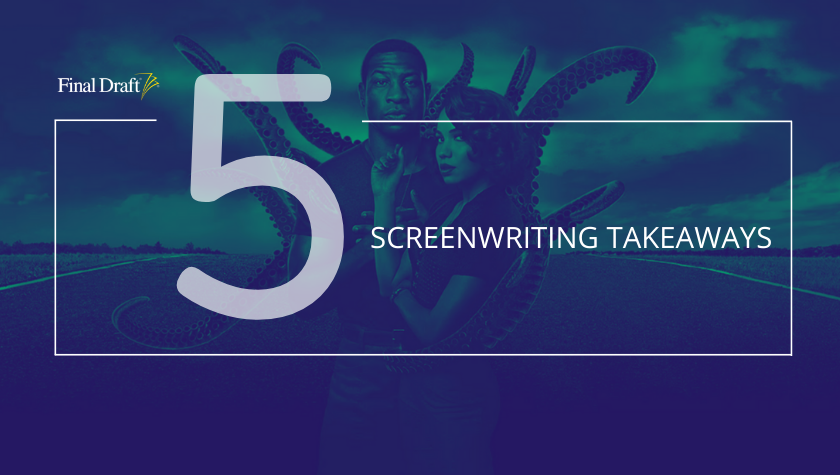5 Screenwriting Takeaways: HBO Max's 'I Hate Suzie'
January 19, 2021
HBO Max has brought the darkly funny laugh-cry British hit I Hate Suzie to American audiences, and it's a cathartic watch to go down the rabbit hole with a woman likely having a worse existential crisis than you (pandemic and political crisis aside). Suzie (writer-actress Billie Piper) just landed the role of a lifetime (she’s gonna be a Disney Princess!) that is, until some naughty photos of her in the midst of a sexual act (not with her husband) leak online. That launches Suzie into a deep examination of her greatest fears, joys and everything in between. A fun study in theme, writers can take away a great deal from I Hate Suzie.
1. Astute Thematic Study.
Suzie is divided into eight episodes all examining the fallout and consequences of Suzie's (and others’) actions. Each episode astutely dives deftly into a rabbit hole of theme, not minding just how (un)comfortable that might make Suzie — or the audience. In fact, that feels like the point. Episode 1 examines “Shock”: Suzie learns her private photos have been leaked online just as a photo team arrives to give her a Cruella de Vil make-over. As the team of workers descend upon her house, Suzie’s composure disintegrates as quickly as the crew discovers Suzie’s lips-on-dick photos splattered across the internet. Via camera work, production design, and music, the audience can feel the walls of Suzie’s world closing in on her right along with her.
Episode 2 examines “Denial” and Suzie goes on a cocaine-fuelled bender at a Comic-Con-style event she blunders after being asked about the photos. The episodes continue to delve deep into a meditation on a theme (even if the mediation feels more like a roller coaster) hitting “Fear,” “Shame,” “Bargaining,” “Guilt,” “Anger,” and finally, “Acceptance” — all right there in episode titles so we know from the start what we'll be feeling with Suzie. It’s so refreshing to see a show spend so much time with one character and give them the time for variations on each theme.
2. The Declining Character Arc.
Suzie has a declining or negative character arc. Something extreme “Save the Cat” enthusiasts may shy away from, but also a wonderful opportunity to allow a woman to wallow in bad behavior sometimes — particularly since it’s so rare. Because of this declining arc (and its inherent Britishness) I Hate Suzie is drawing inevitable comparisons to Flea Bag, but Suzie is its own animal. The show examines if it's truly wrong for a woman to want it all (and sometimes even have it all)? Where does one cross the line between ambition and ugliness, and if society wasn’t full of double-standards, would there be a line at all? Much like other predecessors in the world of declining arcs à la Young Adult, Suzie can be flabbergasting to watch, as Suzie makes some of the mistakes she does. But by merely making space to watch women make mistakes, perhaps all women can become more empowered in their imperfections.
3. Genre Subversion At Its Best.
I Hate Suzie is tough to define. It will make you laugh and cry, and sometimes, Suzie will even burst into song and audiences may ask themselves, what the hell am I watching?! But Suzie is indeed going through the eye of the hurricane of a mental health and personal breakdown, and by embracing and shunning genre all at once, the spin-out of a downward spiral has maybe never been so aptly captured. The show is a very fun ride. Just be sure to buckle your seatbelt as one traverses uncharted, seemingly genre-less territory.
4. Grappling With Masculinity.
There’s a subtle theme throughout the show of men grappling with their masculinity. It’s wonderful and painful all at once, and feels very astutely from the brain of a woman writer — although that doesn’t mean male characters are treated with any less care than their female counterparts. In fact, Cob (played by the infinitely watchable Daniel Ings) is a huge reason to stream this show. Cob is Suzie’s husband, and is instantly emasculated in the pilot as he refuses to come to grips with his wife’s infidelity splashed across the internet for the world to see. Cob’s decline both parallels Suzie’s and has an inverse relationship to it, as he wrestles with the idea of his own masculinity and how it’s affected his wife both in the past and in the present. Suzie’s paramour also seems to be struggling with being a man in the modern world as he grapples with the idea of “what’s right” after committing infidelities of his own. Not to mention the outward symbols of power these men wield (there is a particularly arresting scene of internal power in a classroom and outward power when Cob brandishes a rifle) that seem to full-on express how these two men both fear and embrace their manhood, and it is a wonder to behold on screen.
5. Reality Infusing Fiction.
Suzie is played by Billie Piper, who lays her heart on the line for this role. Piper had her hand in creating the series, her third collaboration with talented playwright Lucy Prebble. To say "write what you know" is somewhat of an understatement here. Piper started her career at thirteen and had a hit single on the U.K. pop charts by the age of fifteen. Before she’d turned twenty-one, Piper had “abandoned” her singing career to focus on her acting. The entertainment industry can be cruel to a young ingenue and Piper seems to have lived in Suzie’s skin and vice-versa. It’s not easy to catch a break, but it’s even harder when you’re staring down 40 and your current claim to fame is running from Nazi Zombies (as Suzie is doing on the show). Piper’s intimate knowledge of constantly being cycled through adoration and the depths of yesterday’s news seem to infuse her every moment, as Suzie is constantly asking herself what matters as she faces the biggest crossroads of her life to date.
Final Takeaway:
I Hate Suzie is an examination of a declining character arc that ultimately society too often puts upon women. With unrealistic expectations, often lose-lose circumstances, and the ridiculous idea of an expiration date on womanhood, female existence is not easy — but it’s particularly hard if you live a life in the spotlight like Suzie does. The creators of the show have pulled off the excellent trick of giving space for a woman to wallow (while still being someone you root for), so that she can then discover her next steps, even if she sometimes chooses the path of stepping lower before she can find higher ground.
Written by: Lindsay Stidham
Lindsay holds an MFA in screenwriting from the American Film Institute. She has overseen two scripts from script to screen as a writer/ producer. SPOONER, starring Matthew Lillard (SLAMDANCE), and DOUCHEBAG (SUNDANCE) both released theatrically. Most recently Lindsay sold PLAY NICE starring Mary Lynn Rajskub. The series was distributed on Hulu. Recent directing endeavors include the Walla Walla premiering (and best screenplay nominated) TIL DEATH DO US PART, and the music video for Bible Belt’s Tomorrow All Today. Lindsay is currently working on an interactive romcom for the production company Effin' Funny, and a feature film script for Smarty Pants Pictures. Lindsay also currently works as an Adjunct Screenwriting Faculty member at USC’s School of Cinematic Arts. You can follow her work here: https://lindsaystidham.onfabrik.com/- Topics:
- Discussing TV & Film




